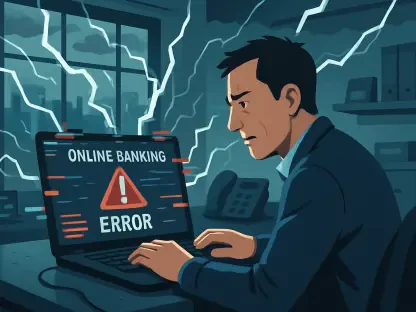As we dive into the evolving world of cryptocurrency, few topics are as pivotal as stablecoins and their potential to reshape everyday finance. Today, I’m thrilled to sit down with Priya Jaiswal, a renowned expert in Banking, Business, and Finance, whose deep knowledge of market analysis and international trends offers invaluable insights into the challenges and opportunities surrounding stablecoins. In this conversation, we’ll explore how these digital assets can become more accessible, the importance of trust and transparency, and the hurdles they face in becoming a seamless part of our financial systems.
What do you see as the primary obstacles preventing stablecoins from being straightforward and user-friendly for the average person?
I think the biggest barrier is the complexity that users are still forced to grapple with. Most people don’t want to understand how a blockchain works or what pegging mechanisms are in play—they just want a tool that solves a problem, like sending money quickly or holding value without volatility. The industry needs to abstract away these technical layers so the experience feels as intuitive as using a debit card. Right now, even basic tasks like setting up a wallet or navigating on-ramps and off-ramps can feel like a steep learning curve for non-tech-savvy folks.
How can the cryptocurrency space make these technical aspects less intimidating for everyday users?
It’s about creating interfaces and experiences that hide the complexity. Think about how smartphones revolutionized tech—most users don’t know how their apps work under the hood, but they can still use them effortlessly. The crypto industry needs to invest in user-friendly design, streamlined apps, and clear language that avoids jargon. Partnerships with familiar financial institutions could also help, bridging the gap by integrating stablecoins into platforms people already trust and use daily.
Trust is often highlighted as a cornerstone for stablecoin adoption. How crucial is it for users to feel confident in the promised link to fiat currency?
Trust is absolutely fundamental. Stablecoins market themselves as a reliable alternative to volatile cryptocurrencies by maintaining a direct connection to fiat, like the US dollar. If users doubt that peg—if they worry their digital dollar might not be worth a real dollar—they’ll hesitate to adopt it for payments or savings. Without trust, the entire value proposition collapses. It’s not just about the technology; it’s about the perception of reliability and security in the user’s mind.
What practical steps can stablecoin issuers take to build and sustain that trust with their audience?
Issuers need to prioritize transparency and accountability. Regular, independent audits of their reserves are a must, proving they have the assets to back every coin in circulation. Clear communication during crises or errors also helps—admitting mistakes and outlining fixes can go a long way. Additionally, adhering to regulatory standards, even if voluntarily at first, signals to users that they’re serious about stability and consumer protection. It’s about showing, not just telling, that they’re trustworthy.
There’s a view that not all stablecoins are equally reliable. How does this variability impact their potential role in mainstream payments?
This inconsistency is a real challenge. If some stablecoins can’t maintain their peg or face operational risks, it creates uncertainty for users and merchants who might otherwise embrace them for transactions. A payment system needs predictability—imagine if a dollar bill’s value fluctuated daily; no one would use it. For stablecoins to become a go-to payment method, the industry must weed out weaker players and ensure only those meeting high standards dominate the market. Otherwise, skepticism will slow adoption.
How can everyday users distinguish between a dependable stablecoin and one that might carry more risk?
It’s not easy for the average person, which is part of the problem. Users should look for stablecoins backed by transparent, well-regulated entities and check if they publish regular reserve reports. Community feedback and track record matter too—has the coin maintained its peg during market stress? But honestly, this shouldn’t be the user’s burden. The industry and regulators need to step in with clear labeling or certification so people can make informed choices without needing a finance degree.
Interoperability between blockchains is often cited as a hurdle for stablecoins. How significant is this issue for users today?
It’s a pretty big deal, especially for anyone trying to use stablecoins across different platforms or ecosystems. Right now, if you hold a stablecoin on one blockchain, moving it to another often involves complex bridges or swaps, which can be slow, costly, or risky due to potential hacks. For users, this friction defeats the purpose of a seamless digital currency. It’s like having cash that’s only accepted in one store—until interoperability improves, stablecoins can’t truly rival traditional payment systems.
Are there any promising developments or solutions on the horizon to address these cross-blockchain challenges?
Absolutely, there’s a lot of innovation happening. Projects are working on cross-chain protocols and bridges to make transfers smoother and more secure. Some are even exploring layer-2 solutions or universal standards that could allow stablecoins to operate natively across multiple blockchains. While these aren’t fully mainstream yet, the progress is encouraging. The goal is to create an experience where users don’t even notice which blockchain they’re on—it just works.
Technical errors, like over-minting incidents, have made headlines. How do such mistakes influence public confidence in stablecoins?
These incidents can be incredibly damaging. When the public hears about errors like minting trillions of dollars’ worth of a stablecoin by mistake, it raises red flags about competence and security. Even if the error is corrected quickly, the headline sticks in people’s minds, fueling doubts about whether these systems are ready for prime time. It’s a reminder that behind the tech, there are still human and operational risks that can erode trust if not handled with extreme care.
What measures should companies implement to prevent these kinds of operational slip-ups?
Robust internal controls and rigorous testing are non-negotiable. Companies need multiple layers of checks before any action—like minting new coins—goes live. Automated safeguards can help catch anomalies in real time, and third-party audits of their systems can identify vulnerabilities before they become disasters. It’s also about culture—fostering a mindset of caution and accountability at every level, because one small error can have outsized consequences in this space.
What is your forecast for the future of stablecoins in everyday payments over the next decade?
I’m cautiously optimistic. I believe stablecoins have the potential to become a cornerstone of digital payments, especially for cross-border transactions and underbanked populations, but only if the industry tackles these hurdles around usability, trust, and regulation. We could see them integrated into major payment apps and platforms within five to ten years, provided there’s collaboration between innovators and policymakers to create a stable framework. The path isn’t guaranteed, though—it’ll depend on how well the space matures and learns from today’s growing pains.









